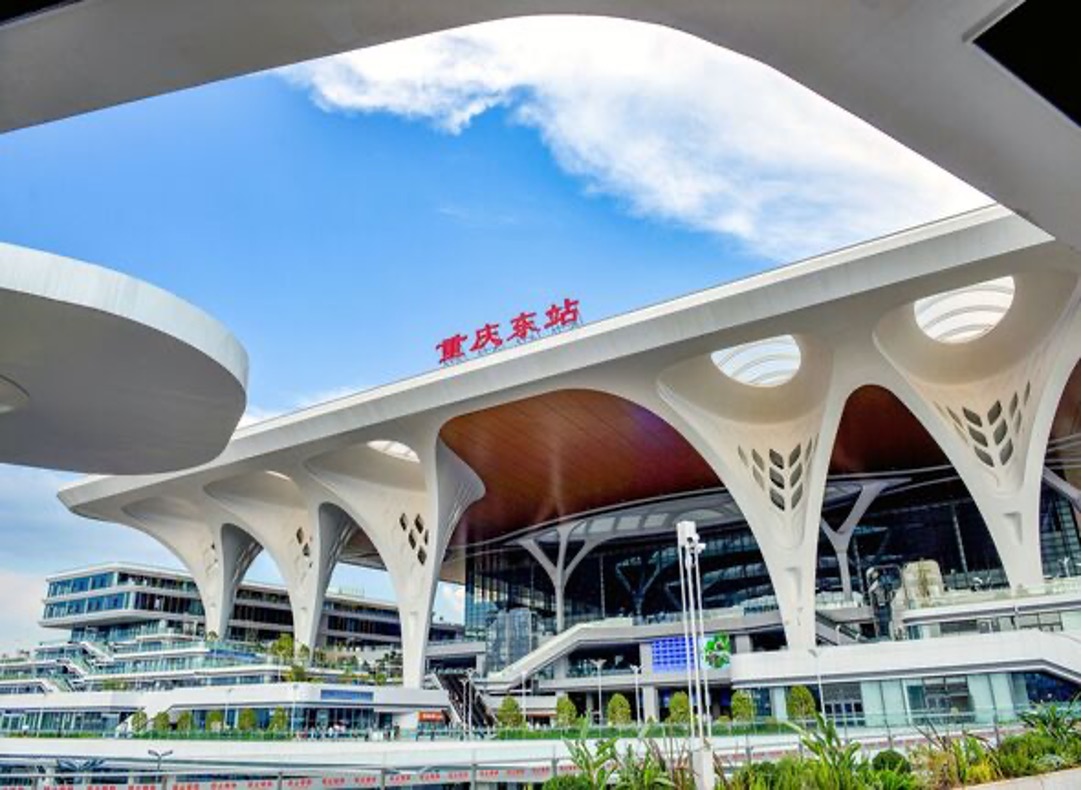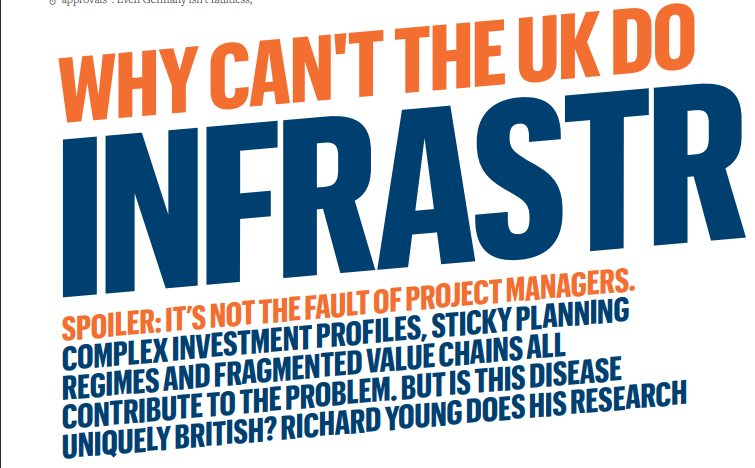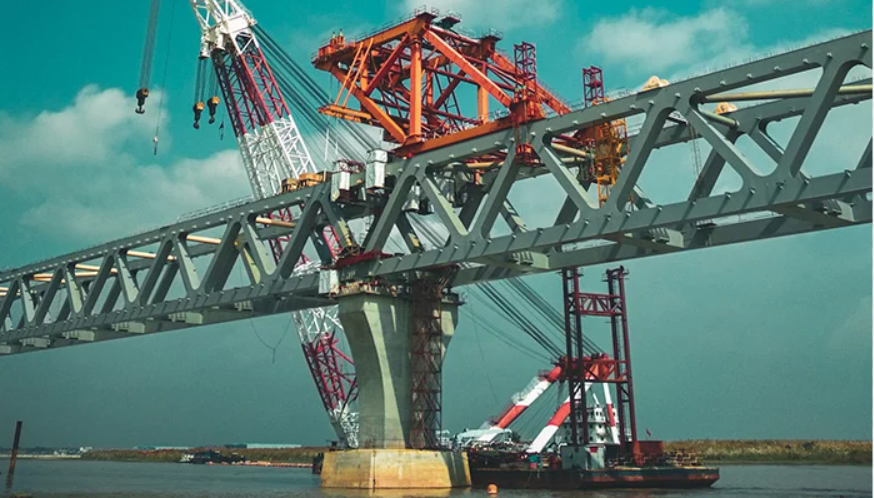
China’s Chongqing East Railway Station – Have the lessons from a generation of flawed megaprojects truely been learnt?
Source: express.co.uk
China likes big! From its $11billion Beijing Daxing International Airport, the world’s largest singlebuilding terminal (of 700,000 square metres), its $79billion South–North water diversion project, to the world’s largest single-dish radio telescope called FAST (FiveHundredMeter Aperture Spherical radio Telescope), this global giant is not stopping.
Last June, the People’s Republic officially launched the Chongqing East Railway Station, the largest high-speed rail hub in western China, and arguably the world, by built-up area. Sprawling about 1.22 million square metres, you can fit 170 football fields in it. Its roof covers about 120,000 square meters and weighs 16,500 tonnes. That’s enough cover for its 15 platforms, 29 tracks, and eight floors. Local news outlets even say it includes three rail yards, four metro lines, seven high-speed lines, and two regular lines; forming part of a 13‑‑6-hour rail network connecting cities from Chengdu to Beijing, Shanghai, Guangzhou, and beyond. In and out, the architecture is remarkable. With water-drop skylights, tree-shaped pillars and expansive public areas, it did not take long for locals, tourists and digital content creators to swarm it.
Despite its size, China is careful not to boast of its competing with Tokyo’s Shinjuku Station, which handles 3.5 million passengers per day. Officials insist that Chongqing is the largest in built-up area only. Some foresee 320,000 passengers daily. But for now, it is built to handle 16,000 passengers at peak hour. China owes its obsession with infrastructure megaprojects to its demography. With over 1.4 billion people and a faster than normal #urbanisation rate, the country has been shoring up its transport systems for its growing population. However, the question for any megaproject is not how much hype it generates on day one, but whether it comfortably withstands the new demands of day one thousand. The megaproject space is filled with cautionary tales of structures that, despite their grandeur, suffered operational dysfunction, urban isolation, and financial underperformance. Chongqing East is therefore more than a station; it is a high-stakes test case, a referendum on whether we have truly learned the lessons from a generation of flawed megaprojects.
The planners of Chongqing East made their goals clear early. The project is a national pilot for “station-city integration,” which means that the transportation hub will be built into the city itself. This guiding philosophy is a direct and conscious response to the well-documented failures of earlier mega-hubs, which often became isolated, monolithic urban islands; vast, sterile structures accessible only by high-capacity roads and disconnected from the life of the city they were meant to serve. Authorities say Chongqing East will be a place where high-speed trains, regular trains, a multi-line metro system, and even planes all come together seamlessly to create a lively and cohesive urban experience.
Despite its technological sophistication and a sheer effort to avoid past mistakes, the structure is still vulnerable to three major operational problems that affect all projects of this size. I’ll explain what I consider to be the three most hazardous systemic risks: the Integration Paradox, which happens when a seamless design intent runs into a fragmented operational reality; the Human Factor, which happens when the logic of engineering runs into the complexities of human behaviour and cognition; and the Viability Gap, which happens when huge financial promises are broken by the accumulated weight of operational friction.
The Big Three
The biggest plans and most ambitious technological marvels often suffer on the first impact with real world problems. Decades of experience from all over the world show that the reasons for failure are not random, but systemic, and fall into three distinct but connected categories of risk. To figure out how Chongqing East railway station and other similar projects will do in the long term, we must understand this framework.
The Integration Paradox: Where seamless design bows to a fragmented reality
The failure to integrate occurs on two key levels: the city as a whole and the station’s own internal systems.
At the city level, the station fails to fit into the city’s ecosystem. In this case, even though it is a major transportation hub, it becomes an island, a place people go only to travel. Large parking lots, fast arterial roads that are inhospitable to pedestrians, and tracts of undeveloped or single use land encircle it. Due to its functional and physical isolation, it is challenging to reach on foot or by local transportation, posing a serious last mile problem that compromises the connectivity it was intended to offer. The hub is unable to serve as a catalyst for dynamic, mixed use urban development, which is a clear contradiction to the stated purpose of “station-city integration.”
Internally, a modern mega-station is a “System of Systems”. It is a complicated network of many independent but connected technological parts, such as signaling, power distribution, supervisory control and data acquisition (SCADA), communications, digital signage, security screening, fire suppression, and more. If these systems are not designed as a whole and thoroughly tested for seamless interoperability, they will slowly descend into cascading operational failures. This can show up as data that does not match, alarm fatigue in control rooms from too many alerts that are low priority, and maintenance problems caused by equipment from different suppliers that does not work with each other. The experience of London’s #Crossrail project, where integration issues with electrical and control systems emerged late in the commissioning phase, serves as a stark warning of the hidden costs and delays associated with this internal fragmentation.
The Human Factor: mismanaging passenger flow
This pitfall challenges the station’s most fundamental purpose: the safe and efficient movement of people. The argument here is that mega-stations are often conceived as hyper-efficient machines for processing trains but are frequently experienced as confusing, stressful, and inefficient environments for the people who use them. This mismanagement of the “human factor” occurs in both the physical and cognitive realms.
Take congestion and #safety, for instance. The sheer scale of a mega rail station, combined with the pulsed arrivals and departures of high-capacity trains, creates immense pressure on key choke points: entrances, security checks, ticket barriers, escalators, and platforms. Even efficiently designed layouts may sometimes suffer bottlenecks due to excessive crowding and cascading delays that can impact system wide punctuality. The case of Birmingham New Street station prior to its redevelopment is a classic example. Passenger demand far exceeding its design capacity led to what a report termed “acute crowding on platforms,” significant safety issues, and even regular station closures to manage the unsafe conditions.
There are also issues of wayfinding and mental load. The spatial #complexity of a multi-level, 1.22 million square meter facility can overwhelm the natural cognitive mapping abilities of its users. A labyrinth of similar looking corridors, identical landmarks, and an over abundance of confusing or contradictory signage can create a high mental load. This leads to passenger stress, anxiety, an increased frequency of wrong turns, and missed connections. The journey through the station, which should be a simple precursor to the main travel leg can become an exhausting ordeal in itself, particularly for infrequent travellers, tourists, the elderly or those with luggage.
The Viability Gap: When economic promises meet operational realities
This addresses the megaproject’s long-term financial stability. The argument is that poor accounting is not the sole cause of financial underperformance; rather, it is the final and unavoidable consequence of shortcomings in the first two areas. The viability gap becomes apparent when the optimistic economic projections used to justify the project’s exorbitant cost clashes with the harsh realities of its day to day operations.
Consequences follow. Demand is suppressed when a station is confusing and stressful to navigate, and challenging and unpleasant to reach. A lack of foot traffic and a poor visitor experience can cause ancillary commercial activity, such as dining, retail, and services, to stagnate, and passenger traffic to fall short of expectations. Both fare and non-fare related revenues suffer as a result. The classic example is the Channel Tunnel, a technological wonder that turned into a financial disaster when revenues fell 50% short of projections, hurting rather than helping the country’s economy.
Simultaneously, the costs of running the station may exceed projections. Poor systems integration leads to higher maintenance, repair, and staffing costs. Inefficient passenger flow requires more personnel to manage crowds and deal with disruptions, especially at peak hour. This operational cost inflation is layered on top of the notorious capital cost overruns that plague such #megaprojects. Studies show that rail megaprojects run an average of 44.7% over budget, and nine out of ten megaprojects of any type experience cost overruns. The combination of lower than expected income and higher than expected costs creates a structural deficit that can burden public finances for decades.
The way forward
The most successful #rail infrastructure systems share a close, mutually beneficial relationship with the city. This way, they do not become solitary urban island. To solve the integration paradox, for instance, such stations create a thriving neighborhood that it serves and is served by. A recurring theme here is planning that require high density, mixed use development within an 800 meter radius. They also prioritise pedestrian networks, where, in order to break the 400 meter last mile barrier and integrate into the urban fabric, their designs concentrate “outside-in,” resulting in a smooth and aesthetically pleasing street level pedestrian grid. Also, we cannot downplay the role of rigorous systems engineering (SE). A disciplined SE process ensures that all technological components are designed for integrated reliability and maintainability, with early input from future operators, in order to prevent internal systems conflict.
For the human factor, public transport infrastructure that thrives are those designed for people, not just passengers. A thorough understanding of human behavior and cognition is essential for the design of a successful station. For instance, the data driven, proactive flow management at Helsinki Airport, uses real time passenger flow analytics to forecast congestion and make proactive staffing and resource adjustments to avoid bottlenecks. Using a multi-layered, intelligent way finding reduces passenger stress and confusion by combining digital tools like smartphone apps that offer personalised, turn-by-turn directions with simple signage and intuitive architecture.
To fill the viability gap, infrastructure that thrives adopts reference-class forecasting. This approach adds realism and counters the optimism bias. It bases cost and benefit estimates on the actual performance of comparable previous projects. To make its mark, the station needs to develop into a significant commercial and retail hub, generating substantial revenue streams outside of ticket sales, much like Berlin’s Hauptbahnhof.
Conclusion
The Integration Paradox, the Human Factor, and the Viability Gap only reveal that the success of a mega-station like Chongqing East hinges on a paradigm shift. It must continue to be a dynamic urban ecosystem rather than as a stand alone transportation object.
The project’s goal of “station-city integration” is not just co-locating transport modes, but engineering a frictionless flow of people, commerce, and culture. This is possible through harmonious internal systems that can adapt to increased load and a dynamic financial model built on a diverse commercial foundation, not just fares.
While the historical record of similar projects is concerning, the pitfalls are avoidable. If Chongqing East successfully navigates these challenges, it will do more than meet its operational targets. It will validate the “station-city integration” model, prove that human-centric design is possible at such epic scale, and establish a new, vital blueprint for the next generation of sustainable and financially viable mega-hubs worldwide.






